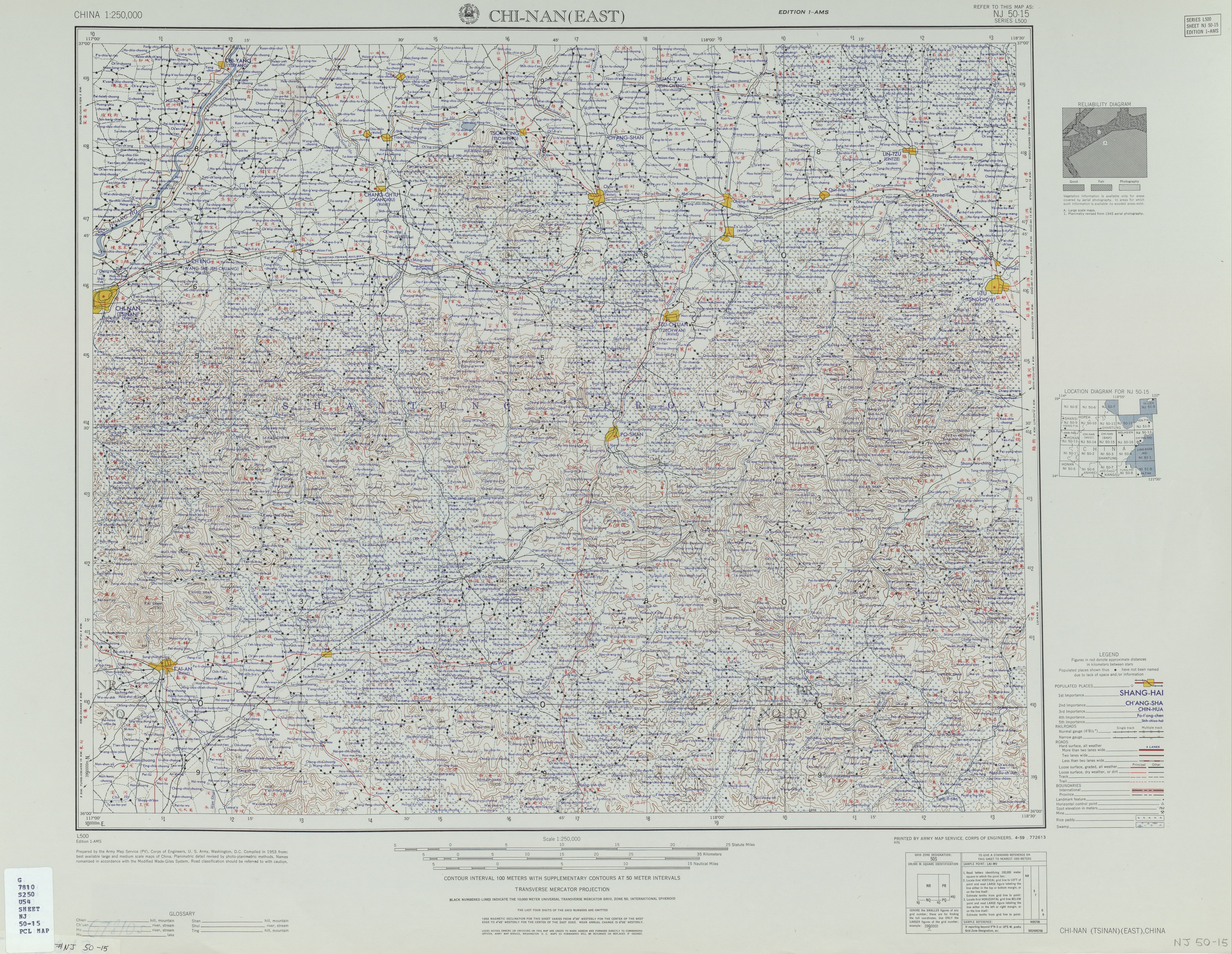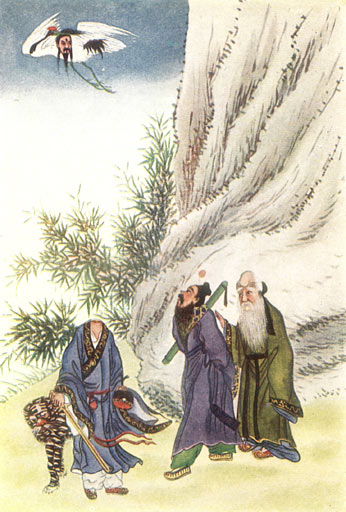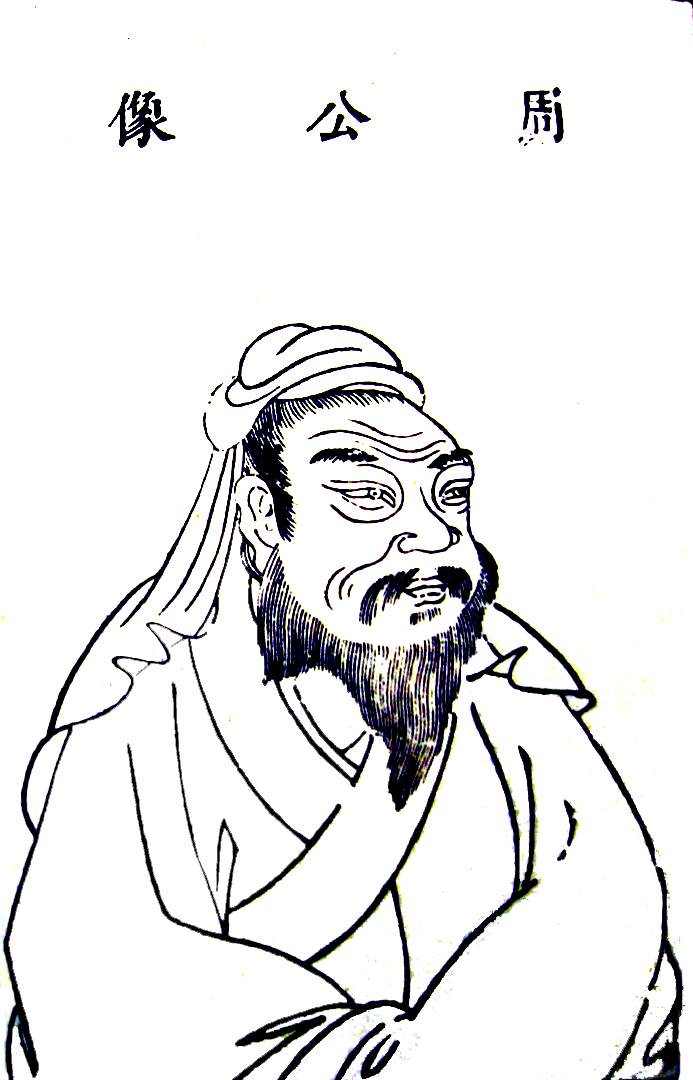|
Qingzhou (ancient China)
Qingzhou or Qing Province was one of the Nine Provinces of ancient China dating back to BCE that later became one of the thirteen provinces of the Han dynasty (206 BCE–220 CE). The Nine Provinces were first described in the '' Tribute of Yu'' chapter of the classic ''Book of Documents'', with Qingzhou lying to the east of Yuzhou and north of Yangzhou. Qingzhou's primary territory included most of modern Shandong province except the southwest corner. History Ancient times The territory takes its name from the ''Tribute of Yu'' wherein Yu the Great wrote: "Between the sea and Mount Tai there is only Qingzhou". In around 5,000 BCE the area was the cradle of Dongyi culture. During the Xia and Shang dynasties, it was home to the Shuangjiu (, ''Shuǎngjīu''), Jize (, ''Jìzé''), and Pangboling (, ''Pángbólíng'') clans and the state of Pugu. Zhou dynasty Following the Duke of Zhou's BCE successful campaign against the Dongyi states allied with the rev ... [...More Info...] [...Related Items...] OR: [Wikipedia] [Google] [Baidu] |
Nine Provinces (China)
The term Nine Provinces or Nine Regions (), is used in ancient Chinese histories to refer to territorial divisions or islands during the Xia dynasty, Xia and Shang dynasty, Shang dynasties and has now come to symbolically represent China. "Province" is the word used to translate ''Zhou (country subdivision), zhou'' (州) – since before the Tang dynasty (618–907 CE), it was the largest Chinese territorial division. Although the current definition of the Nine Provinces can be dated to the Spring and Autumn period, Spring and Autumn and Warring States period, Warring States periods, it was not until the Eastern Han dynasty that the Nine Provinces were treated as actual History of the administrative divisions of China before 1912, administrative regions. Different interpretations of the Nine Provinces The ''Rongcheng Shi'' bamboo slips from the Chu (state), Chu state has the earliest interpretation of the Nine Provinces, but these early descriptions differ widely from th ... [...More Info...] [...Related Items...] OR: [Wikipedia] [Google] [Baidu] |
Linzi District
Linzi District () is a district of the prefecture-level city of Zibo, in central Shandong province, China. Located near the Shengli Oil Field, Linzi's economy is driven by petro-chemical refinery. Wheat, corn and cotton are cultivated in the rural areas surrounding the urban center. The ruins of Ancient Linzi located in the northwest of the district, was the site of the ancient State of Qi's capital. Linzi is one of the most highly developed industrial districts in north China with the highest GDP in Shandong Province. Administrative divisions As 2012, this District is divided to 5 subdistricts, 7 towns and 1 township. ;Subdistricts ;Towns ;Townships * Bianhe Township () Climate People from Linzi # Zuo Si, poet of the Western Jin # Zuo Fen, poet of the Western Jin Western may refer to: Places *Western, Nebraska, a village in the US *Western, New York, a town in the US * Western Creek, Tasmania, a locality in Australia *Western Junction, Tasmania, a locality ... [...More Info...] [...Related Items...] OR: [Wikipedia] [Google] [Baidu] |
Ancient Linzi
Linzi () was the capital of the ancient Chinese state of Qi during the Zhou dynasty. The ruins of the city lie in modern-day Linzi District, Shandong, China. The city was one of the largest and richest in China during the Spring and Autumn Period. Upon occupying Linzi in 221 BC, King Ying Zheng of Qin completed his conquest of the Chinese rival states and declared himself the first emperor of China shortly afterwards. The ruins of the ancient city were excavated in 1926 by Japanese archaeologists and in 1964 by Chinese archaeologists. Layout Linzi covered an area of around with the city built between two parallel rivers that ran north–south, the Zi River to its east and the old course of the Xi River to its west. The city was surrounded by a perimeter wall of rammed earth. The city consisted of an outer city and an inner city. The outer city wall reached a maximum of in base width, averaging between in width. The inner city wall reached a maximum of in base width. The ... [...More Info...] [...Related Items...] OR: [Wikipedia] [Google] [Baidu] |
Emperor Wu Of Han
Emperor Wu of Han (156 – 29 March 87BC), formally enshrined as Emperor Wu the Filial (), born Liu Che (劉徹) and courtesy name Tong (通), was the seventh emperor of the Han dynasty of ancient China, ruling from 141 to 87 BC. His reign lasted 54 years – a record not broken until the reign of the Kangxi Emperor more than 1,800 years later and remains the record for ethnic Chinese emperors. His reign resulted in a vast expansion of geopolitical influence for the Chinese civilization, and the development of a strong centralized state via governmental policies, economical reorganization and promotion of a hybrid Legalist–Confucian doctrine. In the field of historical social and cultural studies, Emperor Wu is known for his religious innovations and patronage of the poetic and musical arts, including development of the Imperial Music Bureau into a prestigious entity. It was also during his reign that cultural contact with western Eurasia was greatly increased, directly a ... [...More Info...] [...Related Items...] OR: [Wikipedia] [Google] [Baidu] |
Han Provinces
Han may refer to: Ethnic groups * Han Chinese, or Han People (): the name for the largest ethnic group in China, which also constitutes the world's largest ethnic group. ** Han Taiwanese (): the name for the ethnic group of the Taiwanese people who may be fully or partially Han Chinese descent. * Han Minjok, or Han people (): the Korean native name referring to Koreans. * Hän: one of the First Nations peoples of Canada. Former states * Han (Western Zhou state) (韓) (11th century BC – 757 BC), a Chinese state during the Spring and Autumn period * Han (state) (韓) (403–230 BC), a Chinese state during the Warring States period * Han dynasty (漢/汉) (206 BC – 220 AD), a dynasty split into two eras, Western Han and Eastern Han ** Shu Han (蜀漢) (221–263), a Han Chinese dynasty that existed during the Three Kingdoms Period * Former Zhao (304–329), one of the Sixteen Kingdoms, known as Han (漢) before 319 * Cheng Han (成漢) (304–347), one of the ... [...More Info...] [...Related Items...] OR: [Wikipedia] [Google] [Baidu] |
Qi (state)
Qi, or Ch'i in Wade–Giles romanization, was a state of the Zhou dynasty-era in ancient China, variously reckoned as a march, duchy, and independent kingdom. Its capital was Linzi, located in present-day Shandong. Qi was founded shortly after the Zhou overthrow of Shang in the 11th centuryBC. Its first marquis was Jiang Ziya, minister of King Wen and a legendary figure in Chinese culture. His family ruled Qi for several centuries before it was replaced by the Tian family in 386BC. In 221BC, Qi was the final major state annexed by Qin during its unification of China. History Foundation During the Zhou conquest of Shang, Jiang Ziya, a native of Ju County served as the chief minister to King Wu. After King Wu's death, Ziya remained loyal to the Duke of Zhou during the Three Guards' failed rebellion against his regency. The Shang prince Wu Geng had joined the revolt along with the Dongyi states of Yan, Xu, and Pugu. These were suppressed by 1039 BC a ... [...More Info...] [...Related Items...] OR: [Wikipedia] [Google] [Baidu] |
Marchland
In Middle Ages, medieval Europe, a march or mark was, in broad terms, any kind of borderland, as opposed to a national "heartland". More specifically, a march was a border between realms or a neutral buffer zone under joint control of two states in which different laws might apply. In both of these senses, marches served a political purpose, such as providing warning of Invasion, military incursions or regulating cross-border trade. Marches gave rise to titles such as marquess#United Kingdom, marquess (masculine) or marchioness (feminine) in England in the Middle Ages, England, ''marqués'' (masculine) and ''marquesa'' (feminine) in Spanish language, Spanish-speaker countries, as well as in the Catalan language, Catalan and Galician language, Galician regions, ''marquês'' (masculine) and ''marquesa'' (feminine) in Portuguese language, Portuguese-speaker countries, ''markesa'' (both masculine and feminine) in Basque Country (autonomous community), Euskadi, ''marquis'' (masculine) ... [...More Info...] [...Related Items...] OR: [Wikipedia] [Google] [Baidu] |
Jiang Ziya
Jiang Ziya ( century BC – century BC), also known by several other names, was a Chinese noble who helped kings Wen and Wu of Zhou overthrow the Shang in ancient China. Following their victory at Muye, he continued to serve as a Zhou minister. He remained loyal to the regent Duke of Zhou during the Rebellion of the Three Guards; following the Duke's punitive raids against the restive Eastern Barbarians or ''Dongyi'', Jiang was enfeoffed with their territory as the marchland of Qi. He established his seat at Yingqiu (in modern Linzi). Names The first marquis of Qi bore the given name Shang. The nobility of ancient China bore two surnames, an ancestral name and a clan name. His were Jiang (姜) and Lü (呂), respectively. He had two courtesy names, Shangfu (尚父; lit. "Esteemed Father") and Ziya (lit. "Master Ivory, Master Tusk"), which were used for respectful address by his peers. The names Jiang Shang and Jiang Ziya became the most common aft ... [...More Info...] [...Related Items...] OR: [Wikipedia] [Google] [Baidu] |
Wu Geng
Wu Geng or Wugeng ( Chinese: ''Wǔgēng''), a.k.a. ''Lùfù'', was an ancient Chinese noble who was the son of Zhou, the last king of the Shang. After his father executed Bigan by cutting out his heart, Wugeng fled to Feng, the capital of the Zhou state, together with his uncles Weizi and Weizhong to plead King Wu of Zhou for help. Shortly afterward King Wu attacked the Shang and defeated King Zhou at the Battle of Muye, thus establishing the Zhou dynasty. Wugeng was allowed to stay in Yin, the old Shang capital, and rule it as a princedom and a vassal lord to King Wu. After King Wu's death and the ascension of his young son Cheng, Wugeng joined the failed rebellion of the Three Guards against the regent Duke of Zhou Dan, Duke Wen of Zhou (), commonly known as the Duke of Zhou (), was a member of the royal family of the early Zhou dynasty who played a major role in consolidating the kingdom established by his elder brother King Wu. He was renowned for actin .... He in ... [...More Info...] [...Related Items...] OR: [Wikipedia] [Google] [Baidu] |
Three Guards
The Rebellion of the Three Guards (), or less commonly the Wu Geng Rebellion (), was a civil war, instigated by an alliance of discontent Zhou princes, Shang loyalists, vassal states and other non-Zhou peoples against the Western Zhou government under the Duke of Zhou's regency in late 11th century BC. After the fall of the Shang dynasty, King Wu of Zhou had appointed his younger brothers Guanshu, Caishu and Huoshu as the "Three Guards" of the East to secure the newly conquered Shang lands. After his death and his young son King Cheng's coronation, King Wu's brother Dan, the Duke of Zhou, declared himself regent and took over the court. This aroused the anger of the Three Guards who suspected Dan of usurpation and believed that they should serve as regents. Allied with many separatist eastern nobles, Shang loyalists under Prince Wu Geng, and several Dongyi () and Huaiyi () states, they rose in rebellion against the Duke of Zhou. The latter then launched a second "eastern cam ... [...More Info...] [...Related Items...] OR: [Wikipedia] [Google] [Baidu] |
Rebellion Of The Three Guards
The Rebellion of the Three Guards (), or less commonly the Wu Geng Rebellion (), was a civil war, instigated by an alliance of discontent Zhou princes, Shang loyalists, vassal states and other non-Zhou peoples against the Western Zhou government under the Duke of Zhou's regency in late 11th century BC. After the fall of the Shang dynasty, King Wu of Zhou had appointed his younger brothers Guanshu, Caishu and Huoshu as the "Three Guards" of the East to secure the newly conquered Shang lands. After his death and his young son King Cheng's coronation, King Wu's brother Dan, the Duke of Zhou, declared himself regent and took over the court. This aroused the anger of the Three Guards who suspected Dan of usurpation and believed that they should serve as regents. Allied with many separatist eastern nobles, Shang loyalists under Prince Wu Geng, and several Dongyi () and Huaiyi () states, they rose in rebellion against the Duke of Zhou. The latter then launched a second "eastern c ... [...More Info...] [...Related Items...] OR: [Wikipedia] [Google] [Baidu] |






